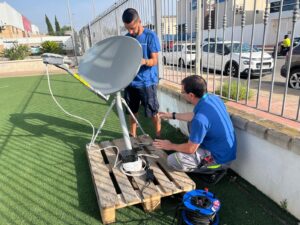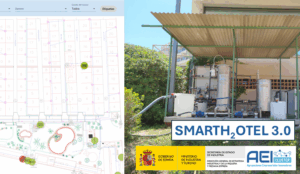For navigation, robots usually rely on external infrastructures or algorithms based on maps that generally require large computational demands. Insects, on the other hand, such as ants, have long been able to travel long distances and always find their way home efficiently.
Inspired by their biology, scientists from the Delft University of Technology (TU Delft, Netherlands) have now created tiny autonomous drones capable of navigating indoor routes of up to 100 meters. The advancement has been published in the journal Science Robotics.
The authors drew on biological discoveries about how ants visually recognize their surroundings and combined it with counting their steps to return home safely. This strategy allows these robots to return home after long journeys and requires very few computational and memory resources.
The team led by Tom van Dijk adapted existing methods to create a bioinspired strategy that combines odometry (measuring the distance traveled in a specific direction) and visual localization, which guides orientation in relation to visual reference points in the environment.
The researchers implemented their method on a 56-gram Crazyflie Brushless drone equipped with a panoramic camera, a microcontroller, and 192 kB of memory, and tested it in various indoor scenarios. The robot first flew to a destination, taking snapshots of its surroundings at regular intervals during the journey. On the way back, it used visual localization to return along the same route, periodically comparing its current environment with snapshots of the route points to correct its course in case of deviation.
This strategy allows these small drones to return home after long journeys and requires very few computational and memory resources since the snapshots were compressed to the maximum and spaced out as much as possible without losing accuracy.
The main idea underlying this method is that snapshots can be spaced out much more if the robot travels between them based on odometry, notes Guido de Croon, another author.
Overall, to navigate in their environment, most robots rely on external resources, such as GPS or computationally complex algorithms. However, these options can be expensive and unreliable. Furthermore, map-based algorithms can be computationally complex and consume a lot of memory, posing a challenge for the autonomous navigation of small robots with limited resources.
However, tiny robots, weighing from tens to a few hundred grams and capable of navigating on their own, have potential for various applications because, thanks to their light weight, they are extremely safe, even if they accidentally collide with someone. Since they are small, they can move through narrow areas, and if manufactured inexpensively, they can be deployed in large numbers to quickly cover a large area.
“The proposed navigation strategy, inspired by insects, is an important step towards the application of tiny autonomous robots in the real world,” says Guido de Croon, who adds, “The functionality of the proposed strategy is more limited than that provided by more advanced navigation methods. It does not generate a map and only allows the robot to return to the starting point. Nevertheless, for many applications, it may be more than sufficient.”
The researcher concludes with some examples: “For inventory tracking in warehouses or monitoring crops in greenhouses, drones could fly, collect data, and return to the base station. They could store mission-relevant images on a small SD card for later processing on a server, although they would not need them for navigation itself.”
via: MiMub in Spanish









